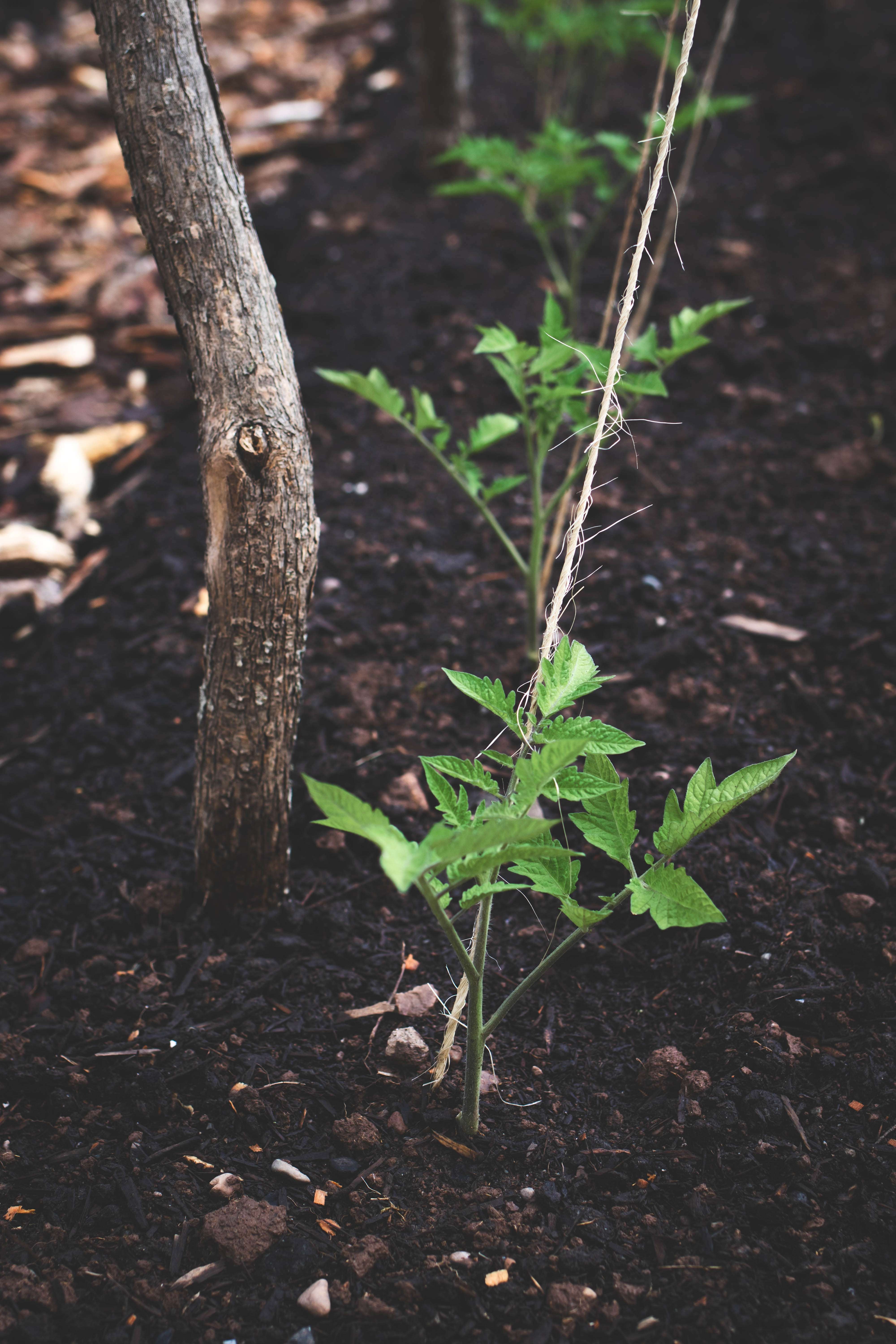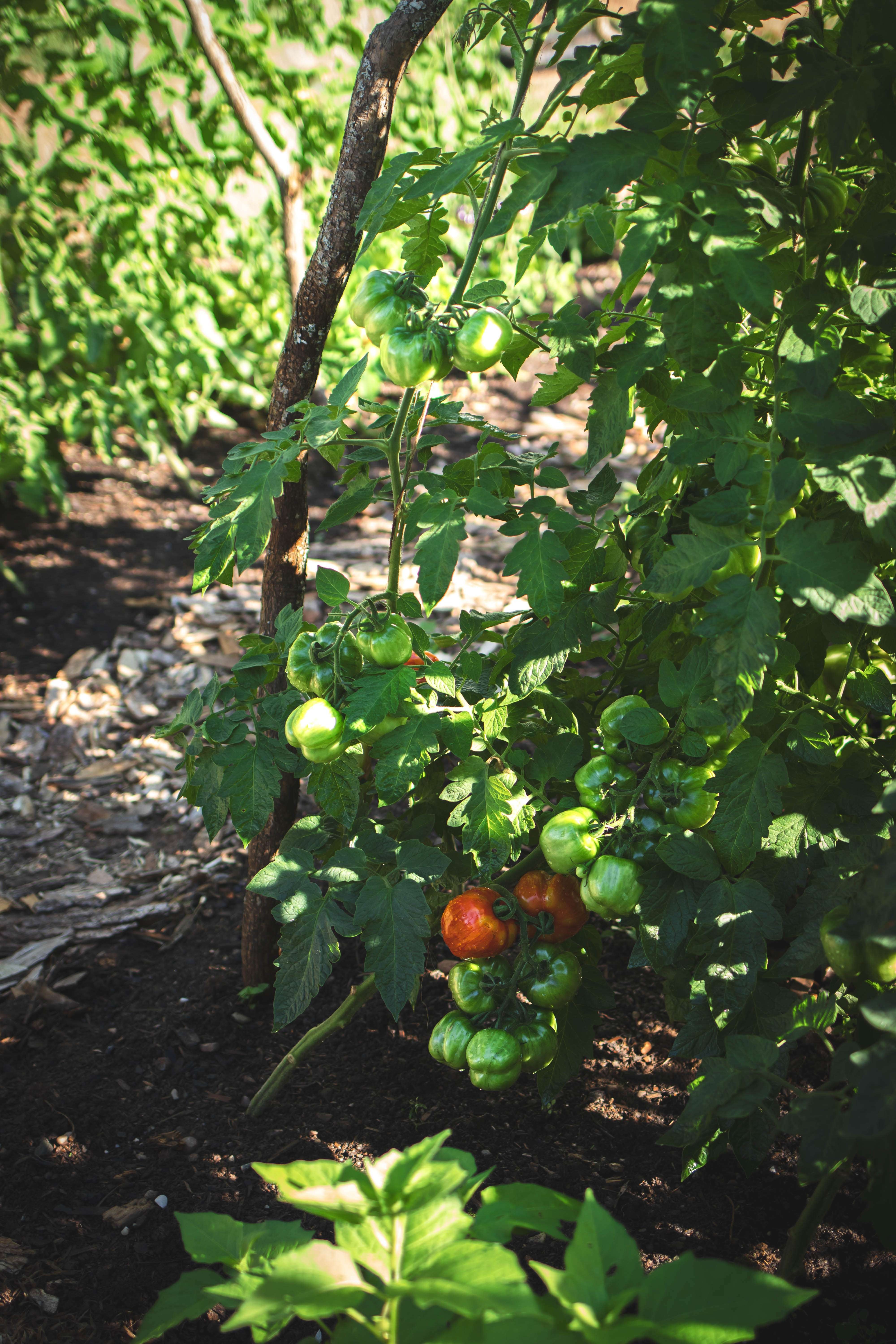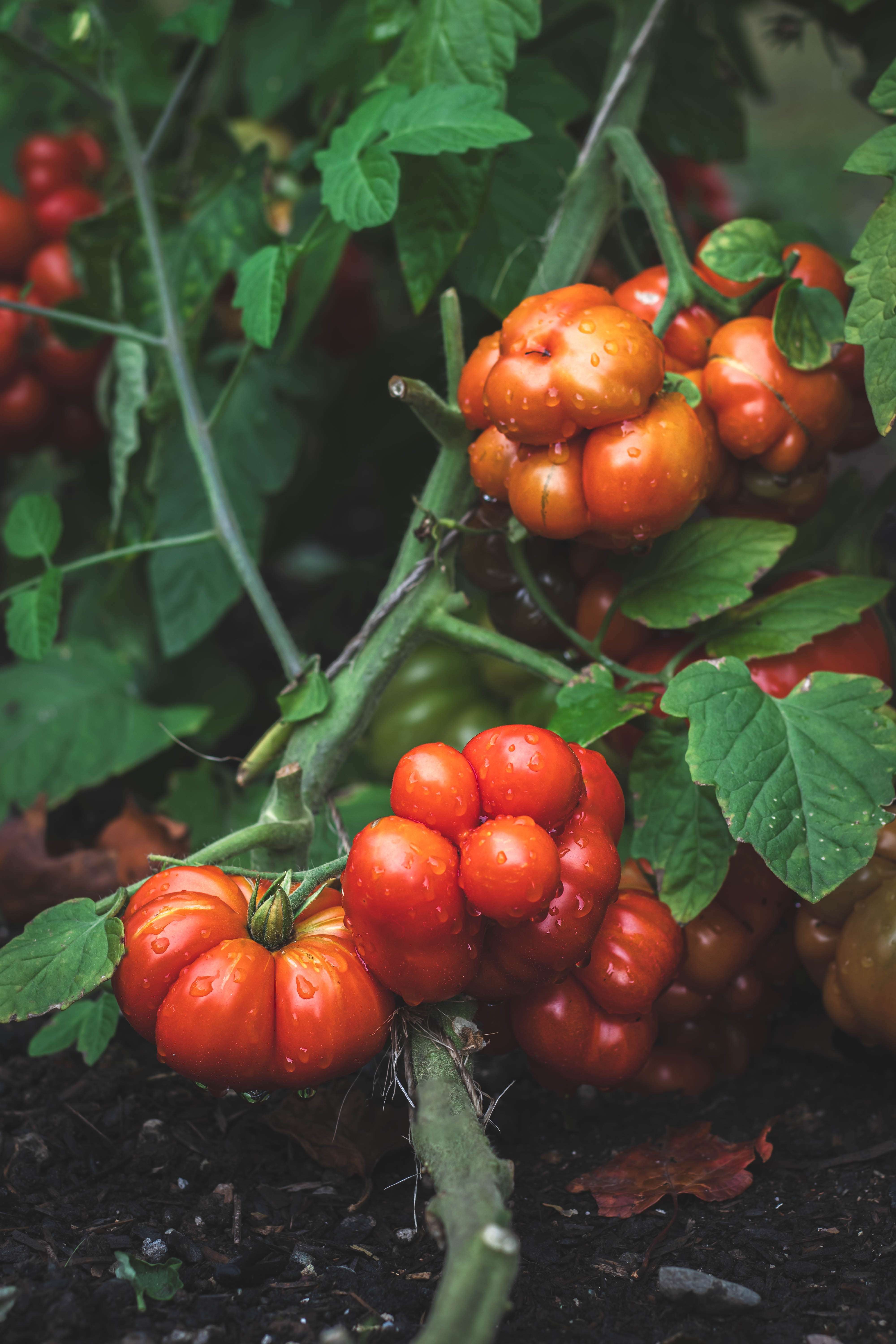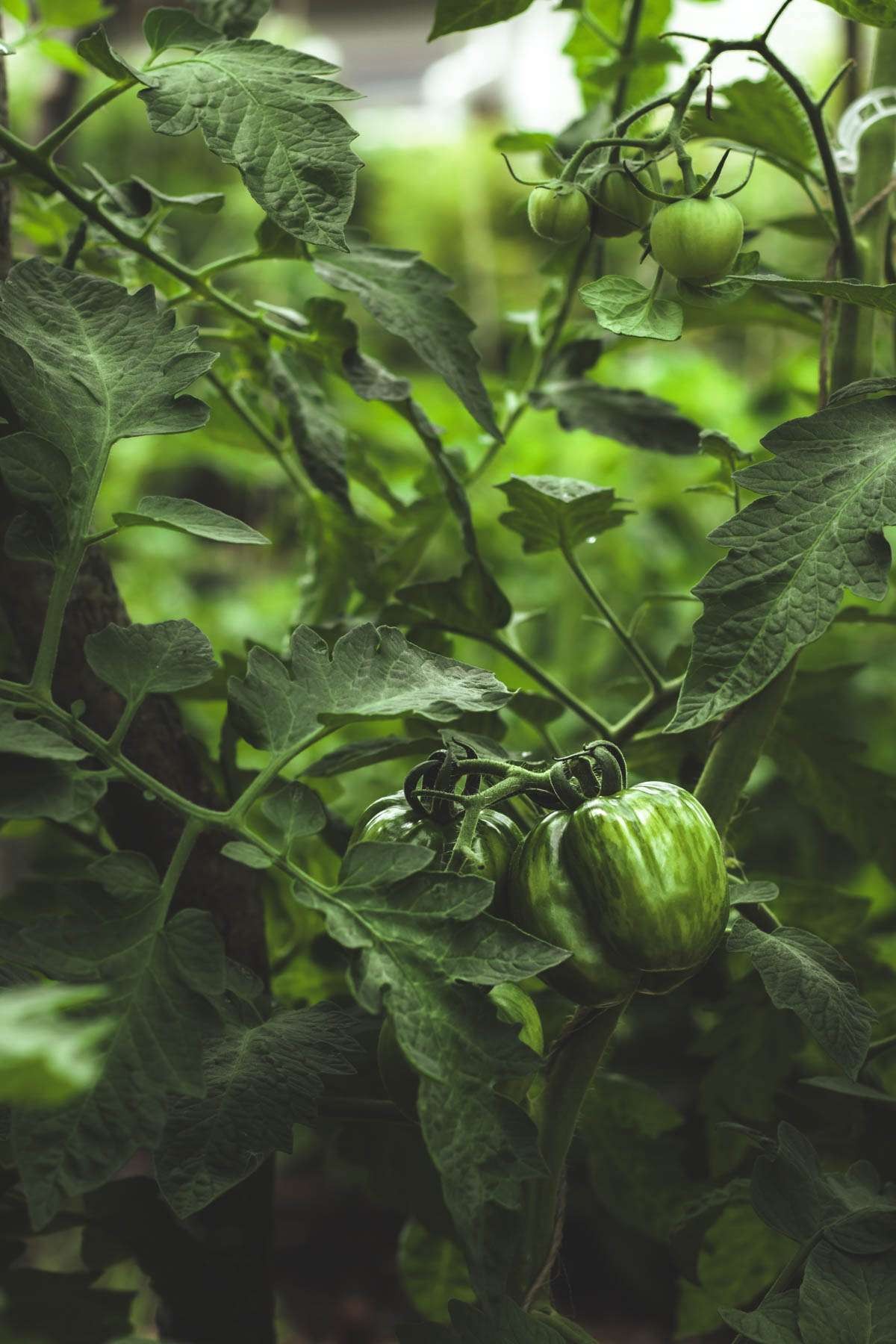Embark on a flavorful journey into the world of tomato cultivation with CARS.EDU.VN. Discover how to nurture your tomato plants from seedling to harvest, ensuring a bountiful supply of this garden favorite. Learn expert tips for successful tomato gardening and elevate your home-grown harvest with optimal growth and care techniques. Dive into tomato care best practices, maintenance for tomato plants and tomato plant health.
1. Seedlings vs. Seeds: Choosing Your Tomato Path
Deciding whether to start with seedlings or seeds is a fundamental step in tomato cultivation. Each approach offers distinct advantages, tailored to different gardening styles and levels of experience.
1.1. The Convenience of Tomato Seedlings
Opting for tomato seedlings offers a significant head start, particularly appealing to novice gardeners or those with limited time. The initial work of germination and early seedling care is already done, saving you valuable time and resources.
Benefits of Seedlings:
- Time-Saving: Bypasses the initial weeks of seed starting, ideal for busy gardeners.
- Simplicity: Reduces the complexity of gardening, perfect for beginners.
- No Special Equipment Needed: Eliminates the need for seed starting supplies like grow lights and heating mats.
However, seedling selection at local stores might be limited. For a wider variety, explore farmers’ markets or local farms.
Expert Insight: According to a study by the University of California, Davis, seedlings often exhibit faster initial growth compared to seeds, leading to earlier harvests in some cases.
1.2. Growing Tomatoes from Seed: A Rewarding Challenge
Starting from seed offers greater control over varieties and aligns with sustainable gardening practices. Though demanding, it’s a rewarding experience.
Why Choose Seeds?
- Variety Selection: Access to a broader range of tomato varieties, including heirlooms and unique cultivars.
- Cost-Effective: Economical for large-scale tomato production.
- Sustainability: Promotes self-sufficiency and reduces reliance on external resources.
- Learning Opportunity: Provides hands-on experience in the entire plant life cycle.
Starting from seed requires dedication and the right equipment.
Success Tip: For beginners, CARS.EDU.VN recommends starting with easier-to-grow varieties like ‘Roma’ or ‘Early Girl’ to gain confidence.
2. Tomato Planting: Timing and Technique
Optimal timing and proper planting techniques are crucial for a successful tomato harvest. Understanding these factors can significantly impact plant health and fruit production.
2.1. The Perfect Time to Plant Tomato Plants
Patience is key. Plant tomato transplants after the last frost and when nighttime temperatures consistently stay above 10°C (50°F), ideally 15°C (60°F).
Timing Considerations:
- Frost-Free Period: Ensure all risk of frost has passed to prevent damage to young plants.
- Soil Temperature: Warm soil promotes root development and overall plant vigor.
- Growing Season Length: Consider the “days to maturity” for your chosen variety to ensure adequate time for ripening before the first fall frost.
Quote: “Timing is crucial for heat-loving plants like tomatoes,” says Dr. Linda Chalker-Scott, a horticultural expert at Washington State University.
2.2. Selecting Healthy Tomato Seedlings
When choosing seedlings, look for signs of health and vigor:
- Appearance: Short, stocky plants with dark green leaves. Avoid leggy or wilted seedlings.
- Leaf Condition: Leaves should be free of yellow or black spots, indicating disease or nutrient deficiency.
- Root System: Check for healthy roots that haven’t started circling the pot, which can hinder growth.
- Bloom Status: Remove any existing blooms before transplanting to encourage vegetative growth.
Pro-Tip: Harden off seedlings before transplanting by gradually exposing them to outdoor conditions.
2.3. Choosing the Right Location for Tomato Plants
Tomatoes thrive in locations with:
- Full Sun: A minimum of 6 hours of direct sunlight per day.
- Rich, Well-Drained Soil: Soil that retains moisture but doesn’t become waterlogged.
In warmer climates, some afternoon shade can prevent blossom drop due to excessive heat (above 30°C or 86°F).
Table: Ideal Conditions for Tomato Growth
| Factor | Ideal Condition |
|---|---|
| Sunlight | Minimum 6 hours of direct sun per day |
| Soil | Rich, well-drained |
| Temperature | Warm, but not exceeding 30°C (86°F) |





2.4. Step-by-Step Guide to Planting Tomatoes
- Harden Off Seedlings: Gradually acclimate seedlings to outdoor conditions.
- Check Weather: Ensure no frost is expected and soil temperature is adequate.
- Time of Day: Transplant on a cloudy day or in the evening.
- Spacing: Allow 18-36 inches between plants, depending on the variety and support system.
- Prepare Holes: Dig deep holes and add compost, bone meal, and slow-release fertilizer.
- Remove Lower Leaves: Remove leaves from the bottom half to two-thirds of the seedling.
- Plant Deeply: Plant the seedling deep enough to cover the stem up to the bottom set of leaves.
- Water Thoroughly: Water the base of the plant, avoiding the leaves.
- Mulch: Apply mulch to retain moisture and prevent soil splash.
- Set Up Support System: Install cages or stakes to support the growing plants.
Planting Tip: Trench planting, laying the stem horizontally in a trench, encourages root development along the buried stem.
3. Tomato Plant Care: Nurturing Your Crop
Consistent care is essential for a successful tomato harvest. This includes proper watering, fertilizing, pruning, and pest/disease management.
3.1. Watering Strategies for Tomato Plants
- Watering Frequency: Tomatoes need about 1 inch of water per week, increasing to 2 inches during hot summer months.
- Timing: Water deeply in the early morning.
- Technique: Water the soil around the plant, avoiding the leaves to prevent disease.
- Consistency: Maintain consistent moisture; avoid letting the soil dry out completely.
- Container Plants: Water more frequently, possibly twice daily during hot weather.
Warning: Inconsistent watering can lead to blossom-end rot, a common tomato problem.
3.2. Fertilizing Tomatoes for Optimal Growth
Tomatoes are heavy feeders and benefit from regular fertilization.
- Initial Amendment: Add compost and slow-release fertilizer to the soil before planting.
- Planting Hole Amendment: Add compost and other amendments to the planting hole.
- Regular Feeding: Fertilize every 2 weeks with a balanced, water-soluble fertilizer that is higher in phosphorus and potassium than nitrogen.
Fertilizer Tip: Look for fertilizers with an NPK ratio (Nitrogen, Phosphorus, Potassium) like 5-10-10 or 8-32-16.
3.3. Pruning and Training Your Tomato Plants
Pruning is essential for indeterminate tomato varieties.
- Determinate vs. Indeterminate: Determinate tomatoes (bush types) do not require pruning. Indeterminate tomatoes (vining types) benefit from regular pruning.
- Air Circulation: Prune the bottom of the plant to remove foliage and fruit that touch the ground.
- Sucker Removal: Remove suckers (shoots that grow between the main stem and branches) to encourage fruit production.
- Topping: About 6-8 weeks before the first expected frost, top the main stem to encourage ripening of existing fruit.
Note: Pruning techniques vary based on the variety and staking method.
3.4. Preventing Tomato Diseases and Pests
Regular monitoring and preventative measures are key to managing pests and diseases.
- Regular Inspection: Check plants regularly for bugs, eggs, and signs of disease.
- Hand Removal: Hand-pick bugs and crush eggs. Remove and discard diseased leaves.
- Companion Planting: Plant basil, marigolds, or mint to deter pests and attract beneficial insects.
- Garden Hygiene: Clean pruners between plants and avoid working in the garden when leaves are wet.
- Mulching: Use mulch to prevent soil splash.
Table: Common Tomato Pests and Diseases
| Problem | Symptoms | Prevention/Treatment |
|---|---|---|
| Aphids | Small, soft-bodied insects on leaves and stems. | Insecticidal soap, neem oil, introduce ladybugs. |
| Tomato Hornworm | Large green caterpillar with a horn. | Hand-pick, Bacillus thuringiensis (Bt). |
| Early Blight | Dark spots on lower leaves that spread upward. | Remove infected leaves, improve air circulation, copper fungicide. |
| Blossom-End Rot | Dark, leathery spot on the bottom of the fruit. | Consistent watering, calcium amendment. |
4. Harvesting Tomatoes: The Fruits of Your Labor
Knowing when and how to harvest tomatoes ensures the best flavor and quality.
- Ripeness Indicators: Ripe tomatoes will gently give way when squeezed and have the color described on the seed packet.
- Harvesting Stage: Harvest when fully ripe or slightly underripe, depending on personal preference and variety.
- Ripening Off the Vine: Tomatoes that have begun to color will continue to ripen indoors. Fully green tomatoes will not ripen off the vine.
Harvest Tip: Collect tomato recipes and prepare canning supplies in advance to avoid waste.
5. CARS.EDU.VN: Your Partner in Gardening Success
At CARS.EDU.VN, we understand the challenges and joys of gardening. From selecting the right tools to understanding complex plant nutrition, we’re here to help.
How CARS.EDU.VN Can Help:
- Expert Articles: Our website features a wealth of articles on gardening techniques, pest control, and more.
- Community Forum: Connect with other gardeners to share tips and ask questions.
- Product Reviews: Find unbiased reviews of gardening products to help you make informed decisions.
6. Addressing Common Gardening Challenges
We recognize that gardening isn’t always easy. Here are some common challenges and how CARS.EDU.VN can help:
- Finding Reliable Information: We provide trustworthy, expert-reviewed content.
- Choosing the Right Products: Our product reviews guide you to the best tools and supplies.
- Troubleshooting Plant Problems: Our articles and community forum offer solutions to common gardening issues.
Success Story: “Thanks to CARS.EDU.VN, I was able to diagnose and treat a blight problem that was destroying my tomato crop,” says John D., a satisfied CARS.EDU.VN user.
7. Contact Us for Personalized Support
Need more help? Contact us at:
- Address: 456 Auto Drive, Anytown, CA 90210, United States
- WhatsApp: +1 555-123-4567
- Website: CARS.EDU.VN
We’re here to support your gardening journey every step of the way.
8. Staying Updated with the Latest Trends
CARS.EDU.VN is committed to providing the latest information on gardening trends, techniques, and technologies.
Table: Latest Gardening Trends
| Trend | Description | Benefits |
|---|---|---|
| Vertical Gardening | Growing plants on vertical structures. | Saves space, improves air circulation, adds visual interest. |
| Organic Gardening | Using natural methods and materials to grow plants. | Promotes healthy soil, reduces chemical use, supports biodiversity. |
| Companion Planting | Planting different crops together for mutual benefit. | Deters pests, attracts beneficial insects, improves nutrient uptake. |
9. Why Choose CARS.EDU.VN for Your Gardening Needs?
At CARS.EDU.VN, we are passionate about empowering gardeners with the knowledge and resources they need to succeed. Our commitment to quality, accuracy, and community sets us apart.
What We Offer:
- Comprehensive Guides: Detailed articles covering all aspects of gardening.
- Expert Advice: Tips and insights from experienced horticulturists.
- Community Support: A vibrant forum for sharing ideas and getting help.
Join the CARS.EDU.VN Community Today!
10. Frequently Asked Questions (FAQ) About Tomato Care
- How often should I water my tomato plants? Tomatoes need about 1 inch of water per week, increasing to 2 inches during hot summer months. Water deeply in the early morning, aiming for consistent moisture and avoiding dry soil.
- What’s the best fertilizer for tomato plants? Use a balanced, water-soluble fertilizer that is higher in phosphorus and potassium than nitrogen (e.g., 5-10-10 or 8-32-16). Fertilize every 2 weeks during the growing season.
- Do I need to prune my tomato plants? Pruning is essential for indeterminate tomato varieties (vining types). Remove suckers (shoots that grow between the main stem and branches) to encourage fruit production and improve air circulation.
- How do I prevent blossom-end rot in tomatoes? Ensure consistent watering to maintain even soil moisture levels. Amend the soil with calcium if necessary.
- What are some common tomato pests and diseases? Common pests include aphids and tomato hornworms. Diseases include early blight and blossom-end rot. Regular monitoring and preventative measures are key.
- When is the best time to plant tomato seedlings? After the last frost and when nighttime temperatures consistently stay above 10°C (50°F), ideally 15°C (60°F).
- How much sun do tomato plants need? Tomatoes require a minimum of 6 hours of direct sunlight per day.
- Should I remove the lower leaves from my tomato plants? Yes, remove the lower leaves that touch the soil to improve air circulation and prevent disease.
- How do I know when my tomatoes are ripe? Ripe tomatoes will gently give way when squeezed and have the color described on the seed packet.
- Can I ripen green tomatoes indoors? Tomatoes that have begun to color will continue to ripen indoors. Fully green tomatoes will not ripen off the vine.
By following these guidelines and leveraging the resources at CARS.EDU.VN, you can enjoy a bountiful tomato harvest and a rewarding gardening experience. Visit cars.edu.vn today to discover more tips, tricks, and tools for successful gardening. Our comprehensive guides and expert advice will help you cultivate a thriving garden and enjoy the fruits (and vegetables) of your labor. Contact us today to get started.